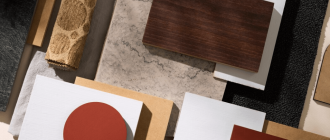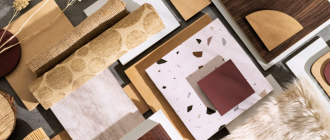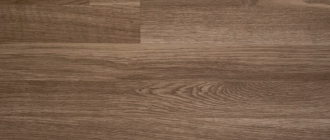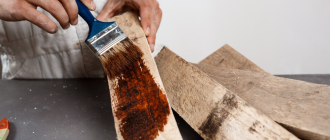Important Information about 4 Wood Types You Need to Know Now
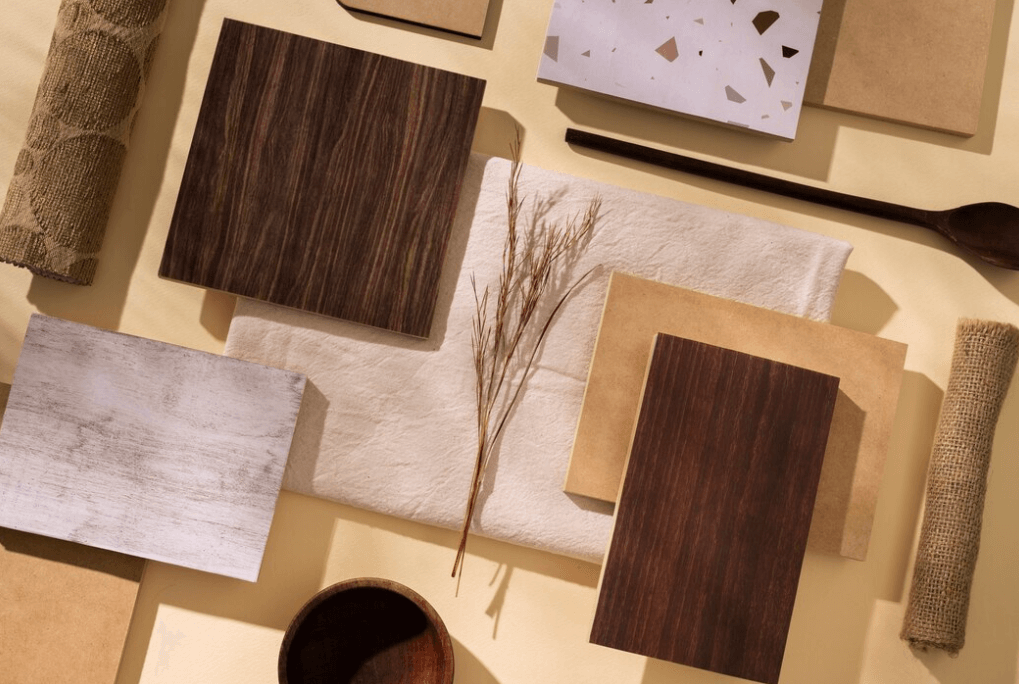
Are you planning your next woodworking project? Choosing the right wood is crucial for your project’s success. With a wide variety of options available, it’s important to select the best wood that suits your needs.
Here are four essential wood types that you should consider:
1. Oak: Known for its durability and strength, oak is a popular choice for furniture making. It has a beautiful grain pattern and can be stained to different shades. With its natural resistance to decay and insect attack, oak is perfect for outdoor projects as well.
2. Maple: If you’re looking for a wood that is easy to work with and has a smooth finish, maple is an excellent choice. It has a light color and a subtle grain pattern, making it ideal for projects that require a clean, minimalist look.
3. Walnut: Walnut is highly valued for its rich, dark color and stunning grain patterns. It is a great choice for projects that require a luxurious and sophisticated appearance. Walnut is also known for its stability and resistance to shrinking and warping.
4. Cherry: Cherry wood features a reddish-brown color that darkens over time, giving it a unique and rich look. It has a fine, straight grain that makes it easy to work with. Cherry wood is often used in high-end cabinetry, furniture, and decorative trim.
When selecting wood for your next project, consider the characteristics and aesthetics that best match your vision. Whether you’re building furniture, cabinets, or decorative items, the right wood choice can make a significant difference in the final outcome.
Choose wisely, and let your woodworking project shine!
Explore Different Wood Types
When it comes to woodworking projects, choosing the right wood is essential. The type of wood you use can significantly impact the outcome of your project in terms of aesthetics, durability, and ease of working. In this guide, we will explore four essential wood types that you should consider for your next project.
1. Oak
Oak is a popular choice for woodworking due to its strength and durability. It has a beautiful grain pattern and is resistant to decay, making it ideal for furniture, flooring, and cabinetry. Oak can be stained or finished to enhance its natural beauty.
2. Walnut
Walnut is a hardwood that is prized for its rich, dark color and striking grain pattern. It is often used to create high-end furniture and decorative pieces. Walnut is relatively easy to work with and can be polished to a smooth, lustrous finish.
3. Maple
Maple is a light-colored wood that is known for its strength and durability. It is commonly used for making cabinets, countertops, and flooring. Maple has a fine, even grain, which makes it easy to work with and finish.
4. Cherry
Cherry wood is known for its warm reddish-brown color that deepens with age, making it a popular choice for furniture and decorative items. It is moderately hard and has a fine, straight grain. Cherry wood can be polished to a smooth, glossy finish.
When selecting wood for your next project, consider the specific requirements of your project, such as the desired appearance, the level of durability needed, and your own woodworking skill level. By choosing the right wood, you can ensure that your project turns out beautifully and stands the test of time.
Oak: Perfect for Traditional Designs
When it comes to traditional designs, oak is the perfect choice for your woodworking projects. With its timeless beauty and durability, oak has been used for centuries to create stunning furniture and architectural features.
Natural Beauty
One of the reasons oak is so popular in traditional designs is its natural beauty. The rich, warm tones and distinctive grain patterns of oak wood add a touch of elegance to any piece. Whether you’re building a classic dining table or a traditional bookshelf, oak will bring a sense of refinement to your design.
Durability and Strength
Another advantage of oak is its outstanding durability and strength. Oak wood is known for its density and resistance to wear and tear. This makes it an excellent choice for furniture that will stand the test of time. Whether you’re crafting a sturdy bed frame or a solid oak chest, you can trust that your oak piece will remain in great condition for years to come.
In addition to its durability, oak is also highly resistant to moisture and insects. This makes it ideal for outdoor furniture or pieces that will be exposed to varying weather conditions, such as garden benches or porch swings.
Easy to Work With
Despite its density and strength, oak is surprisingly easy to work with. It can be cut, shaped, and carved with relative ease, making it a favorite among woodworkers. Whether you’re a professional craftsman or a DIY enthusiast, oak will provide you with a smooth and enjoyable woodworking experience.
Furthermore, oak takes finishes exceptionally well, allowing you to achieve the desired look for your traditional design. Whether you prefer a natural, rustic look or a polished, glossy finish, oak can be stained, painted, or varnished to suit your aesthetic preferences.
Overall, if you’re looking to create a timeless and elegant piece with a traditional design, oak is the perfect wood type for your next project. Its natural beauty, durability, and ease of use make it a favorite among woodworkers and ensure that your creation will impress for years to come.
Pine: Affordable and Versatile
When it comes to choosing the right wood for your next project, pine is a top choice for many reasons. Not only is pine one of the most affordable wood options available, but it also offers a high level of versatility and durability.
Affordability: Pine is a cost-effective wood option that is readily available in most areas. Its affordability makes it a popular choice for both DIY enthusiasts and professionals alike. Whether you’re building furniture, cabinets, or shelving, pine is a budget-friendly option that doesn’t sacrifice quality.
Versatility: One of the key benefits of pine is its versatility. It is a softwood that is relatively easy to work with, making it suitable for a wide range of projects. Pine can be easily cut, shaped, and sanded, allowing for intricate designs and fine details. It is also easy to stain or paint, giving you the freedom to customize your project to match your unique style and taste.
Durability: Despite its affordable price tag, pine is a durable wood that can withstand daily wear and tear. Its natural strength and resilience make it ideal for projects that require stability and longevity. With proper care and maintenance, pine furniture and structures can last for years to come.
Conclusion
When it comes to affordability and versatility, pine is hard to beat. Whether you’re a beginner or an experienced woodworker, pine is a reliable choice that won’t break the bank. Its ease of use and durability make it a top option for a wide range of projects. So, next time you’re planning your next woodworking venture, consider using pine for an affordable and versatile outcome.
Walnut: Ideal for Elegant and Luxurious Projects
When it comes to creating a truly elegant and luxurious project, walnut wood is the perfect choice. With its rich and dark tones, walnut adds a touch of sophistication and class to any design. Whether you’re working on a high-end furniture piece, a stunning flooring installation, or a refined cabinetry project, walnut is sure to impress.
One of the standout features of walnut wood is its distinct grain pattern. The grain can range from straight to wavy, creating a unique and eye-catching design element. This natural variation adds depth and character to any piece, enhancing its overall beauty and appeal.
Not only is walnut aesthetically pleasing, but it is also known for its durability and strength. This makes it an ideal choice for projects that require long-lasting and reliable materials. Whether you’re designing a heirloom-quality piece or a functional yet stylish addition to your home, walnut wood will stand the test of time.
Additionally, walnut is easy to work with and lends itself well to various finishes. It can be smoothly polished to a high shine or left with a more natural look, depending on the desired effect. Its versatility allows you to create a wide range of designs, from modern and sleek to traditional and timeless.
In conclusion, if you’re looking to add an element of elegance and luxury to your next project, walnut wood is the perfect choice. Its rich tones, unique grain pattern, durability, and versatility make it an excellent option for creating truly stunning and sophisticated designs.
Cherry: A Timeless Choice for Furniture
When it comes to choosing wood for your furniture, cherry is a timeless choice that never goes out of style. With its rich, reddish tones and distinctive grain patterns, cherry wood adds warmth and elegance to any space.
One of the reasons why cherry has remained a popular choice for furniture is its durability. Cherry wood is known for its strength and resistance to warping, making it ideal for long-lasting pieces that can withstand the test of time.
In addition to its durability, cherry wood also offers versatility in design. Its tight grain allows for smooth finishes and intricate detailing, making it a favorite among furniture makers and craftsmen. Whether you prefer a classic, traditional look or a more modern aesthetic, cherry wood can be shaped and crafted to suit any style.
Another advantage of cherry wood is its ability to age gracefully. Over time, cherry wood develops a rich patina that deepens and enhances its natural beauty. This aging process adds character and charm to furniture, giving it a unique and timeless appeal.
Finally, cherry wood is also an environmentally friendly choice for furniture. It is a sustainable resource, as cherry trees are harvested responsibly and replanted to ensure future supply. By choosing furniture made from cherry wood, you can enjoy its natural beauty while also contributing to the preservation of our forests.
In conclusion, when it comes to selecting wood for your furniture, cherry is a timeless choice that offers durability, versatility, and a beautiful aging process. With its rich tones, distinctive grain patterns, and environmental sustainability, cherry wood is an excellent option for creating furniture that will stand the test of time.
Consider Wood Durability
When choosing wood for your next project, it’s important to consider the durability of the material. Durability is a crucial factor, especially for outdoor projects that are exposed to harsh weather conditions. Here are some wood types you should consider:
1. Cedar
Cedar is highly durable and naturally resistant to rot, decay, and insect attacks. It is a popular choice for outdoor furniture, decking, and fencing due to its long lifespan. Cedar wood also has a pleasing aroma and a beautiful grain.
2. Redwood
Redwood is another highly durable wood that is resistant to rot, decay, and insects. It is known for its rich reddish-brown color and its ability to resist warping and splitting. Redwood is often used for outdoor structures such as pergolas, gazebos, and siding.
3. Teak
Teak is a tropical hardwood that is known for its durability and resistance to decay. It is commonly used for outdoor furniture, boat decks, and flooring. Teak wood has a beautiful golden color that weathers to an attractive silver-gray over time.
4. Pressure-Treated Wood
Pressure-treated wood undergoes a treatment process that enhances its durability and resistance to rot, decay, and insects. It is widely used for outdoor projects such as decks, fences, and retaining walls. However, it is important to note that pressure-treated wood contains chemicals, so it should not be used for projects that come into direct contact with food or children.
By considering the durability of the wood, you can ensure that your next project will stand the test of time. Choose a wood type that is suitable for your specific project and enjoy the beauty and longevity it provides.
Oak: Known for its Strength and Durability
If you’re looking for a wood type that combines strength and durability, look no further than oak. Oak is well-known for its impressive qualities that make it a popular choice for a variety of projects.
Strength
The strength of oak is unmatched, making it a reliable choice for furniture and flooring. Oak furniture is known to withstand the test of time and is often passed down from generation to generation. Its exceptional strength ensures that your furniture will remain sturdy and durable for years to come.
Durability
Oak is also highly durable, able to withstand heavy use and constant wear. This makes it an ideal choice for high-traffic areas such as hallways and kitchen countertops. The natural resilience of oak ensures that it can handle daily wear and tear without losing its beauty or functionality.
Additionally, oak is resistant to rot and insect damage, making it an excellent choice for outdoor projects such as decks or fencing. Its durability ensures that your outdoor structures will withstand the elements and maintain their integrity over time.
When it comes to strength and durability, oak is second to none. Whether you’re working on a small DIY project or a large-scale construction, choosing oak will guarantee that your finished piece will stand the test of time.
Don’t compromise on quality, choose oak for your next project!
Pine: Not as Durable, But Can be Treated
Pine is a popular choice for many woodworking projects due to its affordability and versatility. However, it is important to note that pine is not as durable as some other wood types.
Pine is a softwood, which means it is more prone to dents and scratches compared to hardwoods like oak or maple. Additionally, pine is susceptible to damage from moisture and insects. Without proper care and maintenance, pine furniture or structures may not withstand the test of time.
Treatment Options
Despite pine’s inherent vulnerabilities, it can be treated to improve its durability. One common treatment option is pressure treatment, where the wood is infused with preservatives to enhance its resistance to decay and insect damage.
Another option is surface treatment, such as applying protective coatings like varnish or paint. These coatings can provide an additional layer of defense against moisture and wear, helping to prolong the life of pine wood.
Benefits of Pine
Despite its susceptibility to damage, pine still offers several advantages. Its affordability makes it an attractive option for those on a budget. Additionally, pine has a natural beauty and warmth that can add character to any project.
Furthermore, pine is relatively easy to work with due to its softer nature. It can be easily cut, shaped, and joined, making it a favorite among DIY enthusiasts and hobbyists.
When considering pine for your next project, it’s important to weigh the pros and cons. With proper treatment and care, pine can be a suitable choice for a variety of woodworking projects without breaking the bank.
Walnut: Durable and Resistant to Damage
When it comes to woodworking, choosing the right wood type is essential for the success and durability of your project. One wood type that stands out for its durability and resistance to damage is walnut.
Strength and Durability
Walnut wood is known for its strength and durability. It has a dense grain structure that makes it highly resistant to wear and tear. This makes walnut an excellent choice for furniture pieces, flooring, and other high-traffic areas.
Due to its durability, walnut is less prone to scratches, dents, and other forms of damage compared to softer wood types. This means that your walnut projects will last longer and maintain their beauty over time.
Natural Resistance
Another advantage of walnut wood is its natural resistance to pests and decay. The natural oils present in walnut make it less appealing to insects and fungi, reducing the risk of infestation and rot. This makes walnut a suitable choice for outdoor furniture, decking, and other projects exposed to the elements.
Additionally, the dark color of walnut provides a natural camouflage for minor imperfections, giving your project a timeless and elegant look.
With its strength, durability, and natural resistance, walnut is a versatile and reliable wood type for any woodworking project. Whether you’re building furniture or creating decorative pieces, walnut will deliver exceptional results that will exceed your expectations.
Cherry: Moderately Durable but Requires Maintenance
Cherry wood is a popular choice for furniture and cabinetry due to its rich color and fine grain. It is known for its moderate durability, making it suitable for a range of projects.
Cherry wood has a warm reddish-brown hue that deepens with age, adding a touch of elegance to any space. Its tight, straight grain gives it a smooth and consistent appearance, making it a favorite among craftsmen and designers alike.
One of the main considerations when using cherry wood is its moderate durability. While it is not as hard as other wood types like oak or maple, cherry wood is still reasonably strong and resistant to decay. However, it is more susceptible to scratches and dents compared to harder woods, so proper care and maintenance are essential to keep it looking its best.
Advantages of Cherry Wood
Despite its moderate durability, cherry wood offers several advantages that make it a desirable choice for many projects:
- Beautiful Appearance: The rich color and fine grain of cherry wood create a stunning visual impact, adding warmth and sophistication to any project.
- Ease of Workability: Cherry wood is relatively easy to work with, making it ideal for intricate designs and detailed carvings.
- Ageing Gracefully: Over time, cherry wood darkens and develops a beautiful patina, allowing it to age gracefully and enhance its natural beauty.
Maintenance Tips for Cherry Wood
To maintain the beauty of your cherry wood project, consider the following maintenance tips:
| 1. Protection: | Use coasters, placemats, and tablecloths to protect the surface from heat, moisture, and scratches. |
| 2. Cleaning: | Regularly dust your cherry wood furniture and cabinets with a soft cloth. Avoid using abrasive cleaners that can damage the finish. |
| 3. Polishing: | Apply a high-quality furniture polish or wax to maintain the luster of the wood and protect it from drying out. |
| 4. Avoid Sunlight: | Keep your cherry wood projects away from direct sunlight, as excessive exposure can cause fading and discoloration. |
By following these maintenance tips, you can ensure that your cherry wood project retains its beauty and durability for years to come.
Assess Wood Aesthetics
When it comes to choosing the right wood for your next project, it’s important to consider not only the durability and functionality but also the aesthetic qualities of the wood. The appearance of the wood can greatly impact the overall look and feel of your project, so it’s crucial to assess the wood aesthetics before making your decision.
Here are some key factors to consider when assessing wood aesthetics:
| Color | The color of the wood can vary significantly depending on the type of wood and its natural characteristics. From light blondes to rich mahogany, the color of the wood can set the tone for your project and enhance its overall appeal. |
| Grain Pattern | The grain pattern refers to the arrangement of the wood fibers and can vary from straight to wavy, or even have intricate patterns. The grain pattern adds texture and visual interest to the wood, giving it a unique and natural look. |
| Texture | The texture of the wood refers to the smoothness or roughness of its surface. Some woods have a smooth, polished finish, while others have a more rustic and rough texture. The texture of the wood can contribute to its overall aesthetic appeal and tactile experience. |
| Figure | Wood with interesting figures, such as knots, burls, or bird’s eye patterns, can add character and uniqueness to your project. These figures are natural imperfections that can create visually appealing focal points in the wood. |
By carefully assessing the wood aesthetics, you can choose the perfect wood that will not only meet your functional needs but will also enhance the visual appeal of your next project. Whether you’re working on furniture, flooring, or woodworking crafts, the right wood aesthetics can elevate your project to new heights.
Oak: Distinctive Grain Patterns and Warm Appearance
When it comes to choosing wood for your next project, oak is a top contender. With its distinctive grain patterns and warm appearance, oak adds a touch of elegance to any space.
One of the standout features of oak is its unique grain patterns. The grain of oak wood is characterized by its distinct lines and swirls, giving it a natural beauty that is hard to replicate. Whether you prefer a more rustic look or a modern design, oak’s grain patterns can complement any style.
In addition to its distinctive grain, oak also boasts a warm and inviting appearance. The rich, golden tones of oak give it a timeless elegance that can enhance the overall aesthetic of your project. Whether you are crafting a piece of furniture or installing hardwood flooring, oak’s warm appearance will create a cozy and welcoming ambiance in any space.
Another advantage of oak is its durability. Oak wood is known for its strength and resistance to wear and tear. This makes it an ideal choice for furniture that will be used frequently or high-traffic areas like flooring. With proper care and maintenance, oak can withstand the test of time and continue to look beautiful for years to come.
When it comes to versatility, oak is hard to beat. It can be easily stained or painted to match your desired color scheme, allowing you to personalize your project to your taste. Additionally, oak can be used for both indoor and outdoor projects, making it a versatile choice for any woodworking endeavor.
Whether you are an experienced woodworker or a DIY enthusiast, oak is a wood type that should be at the top of your list. With its distinctive grain patterns, warm appearance, durability, and versatility, oak is sure to elevate your next project to new heights.
Pine: Light and Natural Look
Pine is a popular wood type known for its light and natural look. With its pale yellow to light brown color, pine brings a sense of warmth and brightness to any project.
One of the main benefits of using pine is its affordability. Compared to other wood types, pine is relatively inexpensive, making it a great choice for budget-conscious woodworkers.
Advantages of Pine
There are several advantages to using pine as a wood type for your next project:
- Lightweight: Pine is a lightweight wood, making it easy to handle and work with.
- Easy to Stain and Paint: Pine has a natural porosity that allows for easy staining or painting, giving you the flexibility to customize the look of your project.
- Natural Beauty: Pine’s natural grain patterns and knots add character and charm to any piece.
- Durability: Despite being a softer wood, pine is still durable and can withstand everyday wear and tear.
Common Uses of Pine
Pine is a versatile wood type that can be used for various projects, including:
| Furniture: | Pine is commonly used in the construction of furniture, such as tables, chairs, and cabinets. |
| Flooring: | Pine flooring is popular for its rustic and cozy look, adding a warm touch to any interior. |
| Trim and Moldings: | Pine is often used for trim work and moldings due to its affordability and ease of installation. |
| Crafts and DIY Projects: | With its light color and versatility, pine is a favorite choice for various crafts and DIY projects. |
Overall, pine is an excellent choice for those looking to achieve a light and natural look in their woodworking projects. Its affordability, natural beauty, and versatility make it a go-to wood type for both beginners and experienced woodworkers alike.
Walnut: Deep, Rich Color and Characteristic Grain
When it comes to woodworking, few woods are as revered as walnut. With its deep, rich color and characteristic grain, walnut adds a touch of elegance and sophistication to any project.
Natural Beauty
One of the standout features of walnut is its natural beauty. The wood has a dark brown color that can range from light to dark, depending on the specific type of walnut. This deep, rich color adds a sense of luxury and warmth to any space.
Distinctive Grain Patterns
Another characteristic of walnut is its distinctive grain patterns. The grain can vary from straight to wavy, and it often features beautiful swirls and knots. These unique grain patterns give walnut furniture a one-of-a-kind look that is highly sought after by woodworking enthusiasts.
Durable and Long-Lasting
Not only is walnut visually stunning, but it’s also incredibly durable. With a Janka hardness rating of 1010, walnut is known for its strength and resistance to wear and tear. This makes it an excellent choice for furniture and other woodworking projects that need to withstand everyday use.
Versatile and Versatile
Walnut is also incredibly versatile, making it suitable for a wide range of projects. Whether you’re creating a dining table, a bookcase, or even a cutting board, walnut can add an air of sophistication and style to any piece. Its deep, rich color and distinctive grain make it a favorite among both professional woodworkers and DIY enthusiasts.
So, if you’re looking to take your woodworking projects to the next level, consider using walnut. With its deep, rich color, characteristic grain, durability, and versatility, walnut is an excellent choice for any project.
Cherry: Deep Red Tones with Smooth Finish
When it comes to choosing the right wood for your next project, cherry is a fantastic option. With its deep red tones and smooth finish, cherry wood is sure to add a touch of elegance and sophistication to any piece.
Cherry wood is known for its distinctive color, which ranges from a rich reddish-brown to a deep burgundy. This natural variation in color adds depth and character to furniture, cabinetry, and other woodworking projects.
Not only is cherry visually appealing, but it also has a lovely smooth finish. This makes it a pleasure to work with, whether you’re carving intricate details or simply sanding and polishing. The grain of cherry wood is generally straight, but it can also display a subtle wave or curl, adding even more visual interest to your creations.
In addition to its aesthetic qualities, cherry wood is also highly durable and resistant to decay. This means that your projects made from cherry will stand the test of time and continue to look beautiful for years to come.
When it comes to woodworking, cherry is a versatile and reliable choice. Whether you’re crafting a stunning dining table, a classic bookshelf, or a decorative picture frame, cherry wood is sure to make a statement. So why wait? Start your next project with the timeless beauty of cherry wood.

